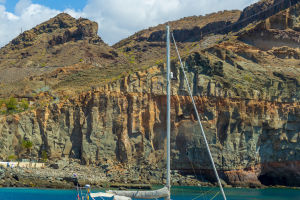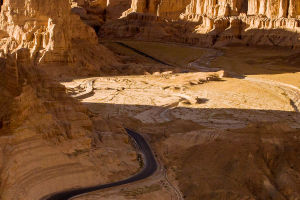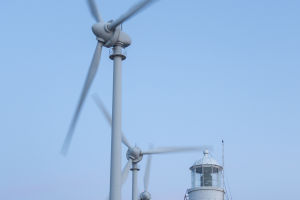
The Green Oasis

The Sahara Desert, spanning over 9 million square kilometers, is the world's largest hot desert.
Its vast expanse of sand and scorching temperatures might conjure images of desolation and barrenness.
However, amidst this seemingly inhospitable landscape, there exist pockets of greenery, where trees stand tall against the odds. This paradoxical phenomenon begs the question: Why are there still trees in the Sahara Desert?
Historical Context:
To understand the presence of trees in the Sahara, we must delve into the region's climatic history. Contrary to popular belief, the Sahara hasn't always been a desert. Geological evidence suggests that approximately 11,000 years ago, during the Holocene epoch, it was once lush and teeming with life. However, gradual climate shifts transformed it into the arid desert we recognize today.
Related
 Windmills operate using Newton's third law.
Windmills operate using Newton's third law.
 Sailboats exploit the Bernoulli effect, achieving high speeds by harnessing wind dynamics.
Sailboats exploit the Bernoulli effect, achieving high speeds by harnessing wind dynamics.
 Deserts and the Gobi are special formations on the surface of the land, making it particularly inhospitable.
Deserts and the Gobi are special formations on the surface of the land, making it particularly inhospitable.
 The mystique of tidal energy: a potent force in renewables, offering predictability and stability amidst marine energy solutions.
The mystique of tidal energy: a potent force in renewables, offering predictability and stability amidst marine energy solutions.
 Renewable energy fosters ecological symbiosis, reshaping our environmental outlook.
Renewable energy fosters ecological symbiosis, reshaping our environmental outlook.
 Road transportation is the most common mode of transportation in the world, what are the famous highways in the world, do you know?
Road transportation is the most common mode of transportation in the world, what are the famous highways in the world, do you know?
Adaptations:
Despite the harsh conditions, certain tree species have adapted remarkably well to survive in the Sahara. One such example is the Acacia tree, known for its deep roots that reach underground water sources. These trees have evolved mechanisms to minimize water loss, such as reduced leaf size and waxy coatings. Additionally, their ability to photosynthesize efficiently during cooler periods, such as early mornings or late evenings, helps them conserve moisture.

Water Sources:
Water, albeit scarce, is not entirely absent from the Sahara. Oasis ecosystems, characterized by underground aquifers or natural springs, provide a lifeline for vegetation, which includes trees. These oases serve as vital refuges for both flora and fauna, sustaining biodiversity in an otherwise arid landscape. Human intervention, such as well-digging and irrigation systems, has also contributed to the survival of trees in certain areas.
Climate Variability:
While the Sahara is predominantly arid, it experiences periodic climate fluctuations. The region undergoes cyclical changes, including oscillations in temperature and precipitation patterns. For instance, rare but intense rainfall events occasionally occur in the Sahara, triggering ephemeral rivers known as wadis. These temporary watercourses can support tree growth and facilitate seed dispersal, contributing to the resilience of Sahara's flora.
Human Impact:
Human activity has left its mark on the Sahara, both positively and negatively. Traditional practices of agroforestry, involving the cultivation of trees alongside crops, have helped sustain vegetation in some regions. However, deforestation, overgrazing, and urbanization have also taken their toll, leading to habitat degradation and loss of biodiversity. Efforts to mitigate these impacts, such as reforestation initiatives and sustainable land management, are crucial for preserving the Sahara's greenery.
Climate Change:
The Sahara, like other ecosystems worldwide, is not immune to the effects of climate change. Rising temperatures and shifting precipitation patterns pose new challenges for its flora, including trees. Studies suggest that increased aridity and desertification could threaten the viability of existing vegetation. However, resilient species may adapt to these changes over time, albeit with uncertainties regarding their long-term survival.
Conservation Efforts:
Conserving the trees of the Sahara requires a multi-faceted approach that addresses environmental, social, and economic factors. Initiatives that focus on habitat restoration, water management, and community engagement are essential for safeguarding these ecosystems. Furthermore, promoting sustainable livelihoods and ecotourism can incentivize local communities to protect their natural heritage while providing economic opportunities.
The presence of trees in the Sahara Desert serves as a testament to nature's resilience and adaptability. Despite the formidable challenges posed by its harsh climate, these hardy plants continue to thrive, albeit in localized and often fragile ecosystems. Understanding the factors that enable their survival is crucial for conserving the Sahara's biodiversity and ensuring the well-being of both its human and non-human inhabitants. As we navigate an era of accelerating environmental change, the green oasis of the Sahara serves as a poignant reminder of the interconnectedness of all life on Earth and the imperative to protect it for future generations.